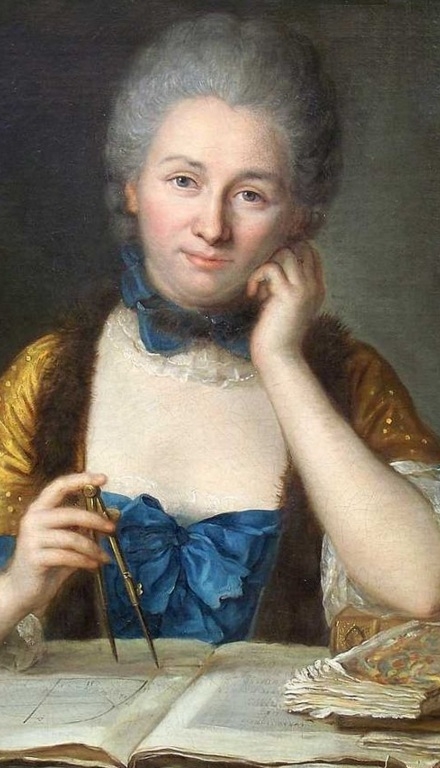On this date in 1706, Gabrielle Émilie Le Tonnelier de Breteuil, later known as Marquise du Châtelet, was born in Paris. The daughter of the Baron de Breteuil, she showed great aptitude and was given broad latitude to study. Émilie was translating Virgil by age 16. She married Marquis Florent du Chastellet in 1725 when she was 18 and he was 34. They had three children before theirs became a marriage in name only (basically an arranged marriage in the first place), although she resisted any idea of divorce. One of their sons was imprisoned and guillotined in 1793 at age 66.
Living a social life in Paris, Émilie met Voltaire. He became her longtime companion under the eyes of her tolerant husband. Voltaire changed the spelling of her name to Châtelet. When Voltaire was facing arrest, they went to live at her husband’s country estate at Cirey, where they engaged in some of their most productive years of work and were known for working day and night. Emilie wrote treatises on mathematics, physics and philosophy.
She is best-known in France for translating Newton’s Principia, which, as the only French translation of that work, was reprinted in 1966. Her philosophical magnum opus, Institutions de Physique (Foundations of Physics), was published in 1740 and was soon translated into several other languages. Posthumously, her ideas were heavily represented in the most famous text of the French Enlightenment, the Encyclopédie of Denis Diderot and Jean le Rond D’Alembert, published shortly after her death.
Du Châtelet began an affair with the poet Jean François de Saint-Lambert in 1748 and gave birth to their daughter, Stanislas-Adélaïde, on Sept. 4, 1749. Du Châtelet died six days later from a pulmonary embolism. She was 42. Her daughter died 20 months later. Du Châtelet had dedicated her Deistic manuscript, Doubts About Revealed Religion, which was posthumously published in 1792, to Voltaire. (D. 1749)
IMAGE: Du Châtelet in a painting by Maurice Quentin de La Tour.


